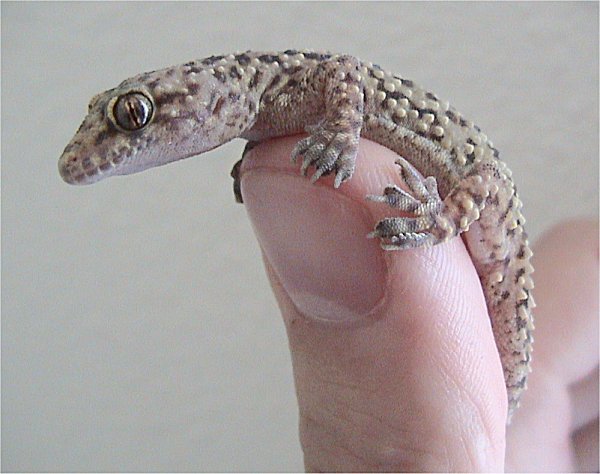The Mediterranean house gecko (Hemidactylus turcicus) is a type of house gecko common to the Mediterranean area which has spread to many parts of the world. It is commonly referred to as the Turkish gecko as represented in its Latin name and also as the moon lizard because it emerges in the evening.A study in Portugal found H. turcicus to be totally nocturnal, with the highest activity peak around 2:00 AM. They are insectivorous, rarely exceeding 15 centimetres (5.9 in) in length, have large, lidless eyes with elliptical pupils, and purple - or tan-colored skin with black spots, often with stripes on the tail. Their bellies or undersides are somewhat translucent. It is currently unknown what impact the geckos have on native wildlife in the regions they have been introduced to.In many parts of the world the range of H. turcicus is increasing, and unlike many other reptiles, they appear to be highly resistant to pesticides. The increase may be explained as a consequence of having few predators in places where they have been introduced, and also of their tendency to take shelter in the cracks and unseen areas of human homes, for example inside walls. Reliance on human habitation has thus contributed to their proliferation, similar to rodents. In some Eastern Mediterranean countries such as Turkey and Cyprus it is a taboo to harm them due to their benign nature and they are often kept as house pets.
Font: Wikipedia
Observation portals:




